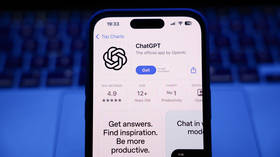One year later, wounds of Freddie Gray’s death still run deep

A year ago today, Freddie Gray fell into a coma after he was arrested by Baltimore police, due to injuries that he ultimately died from. He was never determined to have committed a crime, and his death sparked nationwide protests.
Baltimore, that largest city in Maryland, is a city of 620,000 people, most of whom are African-American. On the morning of April 12, 2015, in the area with some of the city’s highest levels of poverty and crime, a police officer made eye contact with Freddie Gray, a 25-year-old black man. Police said that Gray “fled unprovoked,” prompting police to pursue him under pretenses of him carrying
A year ago today, #FreddieGray was arrested on this corner. pic.twitter.com/07bqcTujs1
— Anya Parampil (@anyaparampil) April 12, 2016
He was arrested and put into a police van, and suffered from spinal cord injuries that many believe resulted from a “rough ride,” a practice that involves putting an arrestee in the back of a van unsecured, so they are helplessly tossed around the vehicle. He fell into a coma died a week later on April 19.
Gray’s death was ruled a homicide, and three of the officers involved – two black and one white – are currently facing manslaughter charges, one of whom faces the additional charge of depraved-heart murder. In December, the first officer’s trial was declared a mistrial.
On April 18, almost immediately after news of the incident reached the public, protests erupted in Baltimore, but were largely ignored by the national media, with RT being one of the first cable news networks to send correspondents.
The demonstrations began attracted national attention when they turned into violent riots beginning on April 24. On April 27, with widespread looting and arson followed a funeral service that was held for Gray, resulting in Governor Larry Hogan declaring a state of emergency and calling in the Maryland National Guard on April 27. A mandatory 10:00pm curfew was instated a day later.
By the time the state of emergency was lifted on May 6, 113 police officers were injured and 486 protesters were arrested.
One year later, the media scrutiny of Baltimore is long gone, but large swaths of the city remain under the thumb of high crime and poverty rates. The corner where Freddie Gray was shot is located in one of the poorest areas of the city, and has many vacant houses that Baltimore authorities are trying to hand over to the stewardship of outside nonprofits for urban renewal.
However, Lawrence Grandpre, director of research at Leaders of a Beautiful Struggle, says that the city’s residents themselves should have control of the Baltimore’s resurgence.
“We saw the narrative of them wanting to come in and basically destroy all the [vacant houses] in this neighborhood and basically saying ‘nothing’s good there, we need to wipe it all out,’” Grandpre told RT while standing before a new community garden located across the street from a mural dedicated to Freddie Gray.
“And we also see the narrative of people thinking we need people from outside the city to come in and save the city, people with college degrees who do Ted Talks and thinking the non-profit system is gonna save Baltimore,” he said, continuing “when really, it’s the indigenous leadership combined with community coalitions that lift up the indigenous efforts … here that are gonna make lasting change and make sure that Freddie Gray’s death doesn’t just be a moment, but starts a movement for social justice.”
Ericka Alston, founder of The Kids Safe Zone recreational center, told WBFF-TV that the issues responsible for the unrest are still present in the city.
"We're in the area of town with the highest unemployment rate, the highest incarceration rate, the undereducated, highest teen pregnancy. So there's lots of resources this community needs."
Founder Ericka Alston on Freddie Gray "I can speak with confidence that he didn't die in vain." pic.twitter.com/px9uczPd6z
— Shelley Orman (@ShelleyOFox45) April 12, 2016
"We wouldn't be here if Freddie Gray didn't die," Alston said. "I used to feel guilty about the beautiful thing that happened as a result, but now I can speak with confidence that he didn't die in vain."
In September, Gray’s family received a $6.4 million wrongful death settlement with the city of Baltimore. William Murphy, the lawyer who represented the family for the civil settlement, echoed Alston’s sentiments, and told The Huffington Post that the roots of the Baltimore riots still exist.
“The causes of the civil disturbance in Baltimore last year have not been eliminated,” Murphy said. “This can happen again.”
Last year, homicides climbed last year to the highest level in the city’s history on a per-capita basis. But a year after his death, many still hold onto the legacy of Freddie Gray as a call for change to criminal justice.
Preparing 4 all the "What's changed in the year since #FreddieGray?" questions. Short Answer: Little from the top but a whole lot from below
— Dr. Heber Brown III (@HeberBrown) April 12, 2016
Worth noting: 1 yr after #FreddieGray's arrest, criminal justice reform is story of the day: https://t.co/v6IUWDYCZwpic.twitter.com/AtUZbtKfYx
— Kevin Rector (@RectorSun) April 12, 2016
The fight for #FreddieGray one year later. pic.twitter.com/8nR1CALiza
— Kwame Rose (@kwamerose) April 12, 2016













